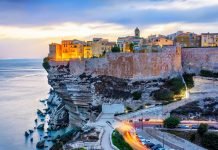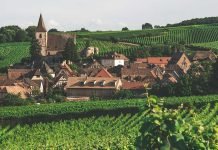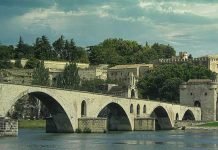Before the arrival of European colonizers, Martinique was a vibrant, culturally rich island shaped by its indigenous inhabitants, primarily the Arawaks and Caribs. While they had different lifestyles and social structures, both groups left a lasting legacy on the island, from agricultural practices to artisan skills, that continues to be felt and celebrated today.
These indigenous people, while having faced significant hardship due to colonization, have a profound and enduring legacy in the cultural tapestry of Martinique.
This article delves into the rich history and cultural legacy of these indigenous people, and how the island’s narrative evolved following European contact and colonization.
The First Inhabitants: The Arawaks
Arrival and Settlement
The Arawaks, also known as the Taíno or Lokono people, are believed to have arrived in Martinique from the Orinoco Basin in South America around 100 AD. These indigenous people embarked on a long journey, navigating through the Caribbean Sea, settling on various islands in the Lesser Antilles including Martinique. Archaeological evidence, including pottery and artifacts, supports the early presence of these people on the island.
Social and Cultural Life
The Arawaks were known for their peaceful and well-organized societies. Their social structure was largely matrilineal, meaning that lineage and inheritance were passed through the mother’s line. This matrilineal system played a role in the organization of the Arawak communities, including the leadership roles that women held in their society.
The Arawaks lived in large communal houses called bohios. These houses were constructed with wooden frames and palm thatch roofs, designed to be both functional and suitable for the Caribbean climate.
As skilled potters, the Arawaks produced intricately designed ceramics, which were often decorated with elaborate motifs and patterns. These designs not only served aesthetic purposes but also had cultural and spiritual significance.
Their economy was based on a combination of fishing and agriculture. They cultivated various crops, such as cassava (a root vegetable that was a staple in their diet), as well as fruits and vegetables. They developed sustainable agricultural practices, including the use of fish for fertilizer, which contributed to the fertility of the soil.
The Arrival of the Caribs
Migration and Conquest
In the late 14th century, the Caribs, originating from the mainland of South America, began migrating through the Lesser Antilles. They were fierce warriors, and their arrival in Martinique marked a period of conflict and eventual dominance over the Arawaks. It was the Caribs who later named the island “Madiana” or “Madinina,” which translates to “Island of Flowers,” illustrating their deep connection to the land.
Lifestyle and Traditions
Unlike the Arawaks, the Caribs were known for their patriarchal society, in which men typically held positions of power, particularly in matters related to warfare and navigation.
The Caribs were excellent navigators and fishermen, constructing large and seaworthy canoes that allowed them to travel between the islands of the Caribbean. These canoes were carved from single, large trees, demonstrating the Caribs’ significant craftsmanship.
Their agricultural practices were advanced and sustainable. Much like the Arawaks, they cultivated cassava, but they also introduced other crops to the island, such as sweet potatoes and corn. The Caribs used the ‘slash-and-burn’ technique to clear land for cultivation. This agricultural system, which they likely brought from the South American mainland, involved cutting and burning plant cover to enrich the soil with nutrients.
The Caribs also had rich spiritual beliefs, centered around a deep connection to nature. They believed in a complex system of spirits and engaged in various ceremonies and rituals to connect with these entities.
In terms of artistry, the Caribs are known for their vibrant and intricate basket weaving and pottery, which were integral to their daily life and culture. The patterns and designs in their art often depicted stories, natural elements, and cultural symbols, and this artistic heritage remains influential in the region today.
European Contact and Its Consequences
Initial Encounters
Christopher Columbus sighted Martinique during his fourth voyage in 1502. While Columbus himself did not land on the island, early European contact introduced new goods to the Caribs, including metal tools and weapons. In exchange, Europeans were introduced to new crops such as tobacco, corn, and sweet potatoes. However, along with these exchanges, the Europeans introduced diseases such as smallpox, measles, and influenza to which the indigenous populations had no immunity. These diseases would prove devastating to the Carib population.
Resistance and Decline
Despite their fierce resistance, the arrival of European colonizers, notably the French in 1635 under Pierre Belain d’Esnambuc, marked a tragic decline for the indigenous populations. The Caribs initially attempted to resist French colonization through armed conflict. Despite their efforts to defend their land, they were significantly disadvantaged in terms of weaponry and succumbed to the relentless attacks of the colonizers. In addition to warfare, many indigenous people were enslaved and subjected to brutal conditions under the French. The combination of warfare, enslavement, and European diseases decimated the indigenous population of Martinique.
The Colonial Era and Slavery
Fort-de-France: The Colonial Capital
The heart of Martinique’s capital, Fort-de-France, is Fort Saint Louis, a 17th-century fortress initially constructed to protect the colony from pirate attacks and foreign invasions. The city, previously known as Fort-Royal, eventually became the political and economic hub of the island and a vivid testament to the island’s colonial past.
Among the notable colonial architecture is the Schoelcher Library. This library is named after Victor Schoelcher, a prominent French abolitionist who played a key role in the abolition of slavery in the French colonies. The library, designed in an ornate Byzantine-Romanesque style, was initially exhibited in Paris before being disassembled and shipped to Martinique, where it was reassembled in 1893.
Plantation Economy and Social Structure
During the colonial era, Martinique’s economy was heavily dependent on plantations, which were large farms producing export crops. The main products included sugar, coffee, cocoa, and cotton. These plantations were operated through a system of enslavement that involved forcibly bringing Africans to Martinique and other Caribbean islands. The enslaved Africans endured brutal conditions, working long hours under harsh supervision and living in deplorable conditions.
The social structure of Martinique during the colonial era was deeply hierarchical. At the top were the European planters and colonial officials, who held significant political and economic power. Below them were free people of color (often mixed-race individuals known as ‘mulattoes’), who had some legal rights but were still subject to significant social discrimination. At the bottom were the enslaved Africans, who had no legal rights and were considered property rather than people.
The institution of slavery left a deep scar on Martinique’s social and cultural fabric. Enslaved people resisted their condition in various ways, including the creation of Maroon communities (runaway slave communities in remote areas), practicing their African-derived religions, and occasionally revolting against the planters, though at great risk to their own lives.
The European contact and subsequent colonization of Martinique were defining and often tragic chapters in the island’s history. The indigenous populations, once thriving and vibrant communities, were reduced significantly due to diseases, warfare, and enslavement. With the establishment of the plantation economy, enslaved Africans became the backbone of the colony’s prosperity, and their forced labor and cultural contributions have had a lasting impact on Martinique’s society. Today, the echoes of this painful past are omnipresent, but so too are the rich traditions and resilience that have shaped the island’s unique and enduring culture.
Post-Emancipation and the Path Forward
Emancipation and Legacy
Victor Schoelcher’s 1848 decree, prepared while he was undersecretary of the French navy, led to the abolition of slavery in Martinique, along with other French colonies. This marked a profound turning point in the island’s history. Following the abolition, newly freed individuals faced significant challenges, including limited access to land and economic resources, as well as pervasive social discrimination. However, they also began to contribute actively and openly to the island’s social and cultural life. Many of the island’s distinctive cultural forms, including its music, dance, and Creole language, are rooted in this post-emancipation period, where newly freed individuals could express and preserve their heritage more openly.
La Savane des Esclaves
In Trois-Îlets, Martinique, La Savane des Esclaves is an outdoor museum created by Gilbert Larose. This museum is dedicated to preserving the memory and history of the enslaved people of Martinique. The exhibits include reconstructed slave cabins, traditional gardens, and historical displays that offer deep insights into the harsh conditions endured by enslaved Africans, as well as their resistance and resilience. La Savane des Esclaves serves as a significant site for education and remembrance on the island, playing a critical role in ensuring that this dark chapter of Martinique’s history is neither forgotten nor minimized.
The Legacy of the Indigenous People
Cultural Imprint
Despite the decimation of indigenous populations due to colonization, their presence is still felt in Martinique today. Place names, such as the Carib-derived “Madinina,” still exist. Traditional agricultural practices, some of which may have originated with the island’s indigenous peoples, persist in rural areas. Furthermore, aspects of local folklore, craftwork (such as basket weaving), and certain fishing techniques reflect the island’s indigenous heritage. The Carib people’s use of the dugout canoe has left a lasting impression on the island, influencing Martinican fishing and boating traditions.
Recognition and Remembrance
Contemporary Martinique sees growing recognition of its indigenous heritage, reflecting a broader movement across the Caribbean and the Americas to acknowledge and honor indigenous peoples and cultures. This recognition has taken several forms:
- Educational Programs: Schools in Martinique are increasingly including the history and culture of the island’s indigenous people in their curricula, helping new generations understand this crucial part of their heritage.
- Cultural Festivals: Various cultural festivals in Martinique now incorporate aspects of indigenous heritage, including traditional music, dance, and crafts. These festivals serve to both honor the island’s indigenous past and educate the public about this often overlooked aspect of Martinican history.
- Archaeological Research: Ongoing archaeological work in Martinique is unearthing new evidence of the island’s indigenous people, helping scholars and the public alike to develop a richer and more nuanced understanding of their history, society, and culture.
- Monuments and Commemorations: Across the island, there are efforts to establish monuments and memorials that honor the indigenous people of Martinique, similar to the memorials that exist for the victims of slavery.
In sum, post-emancipation Martinique is a society shaped by its complex and sometimes painful past, but it is also a society that has demonstrated remarkable resilience and creativity. From the vibrant traditions of the newly freed people in the late 19th century to the ongoing efforts to recognize and honor the island’s indigenous heritage, Martinique continues to forge a path forward that acknowledges its history while also celebrating its unique and enduring culture.
The layers of Martinique’s history are rich and complex, stretching from the indigenous Arawaks and Caribs to the tumultuous colonial era and the subsequent struggles and cultural evolution. Today, Martinique seeks to honor and remember these diverse legacies while forging a distinct and vibrant identity for the future.
For further details and a deeper understanding, it is advisable to consult authoritative and scholarly sources on the history and culture of Martinique.


















